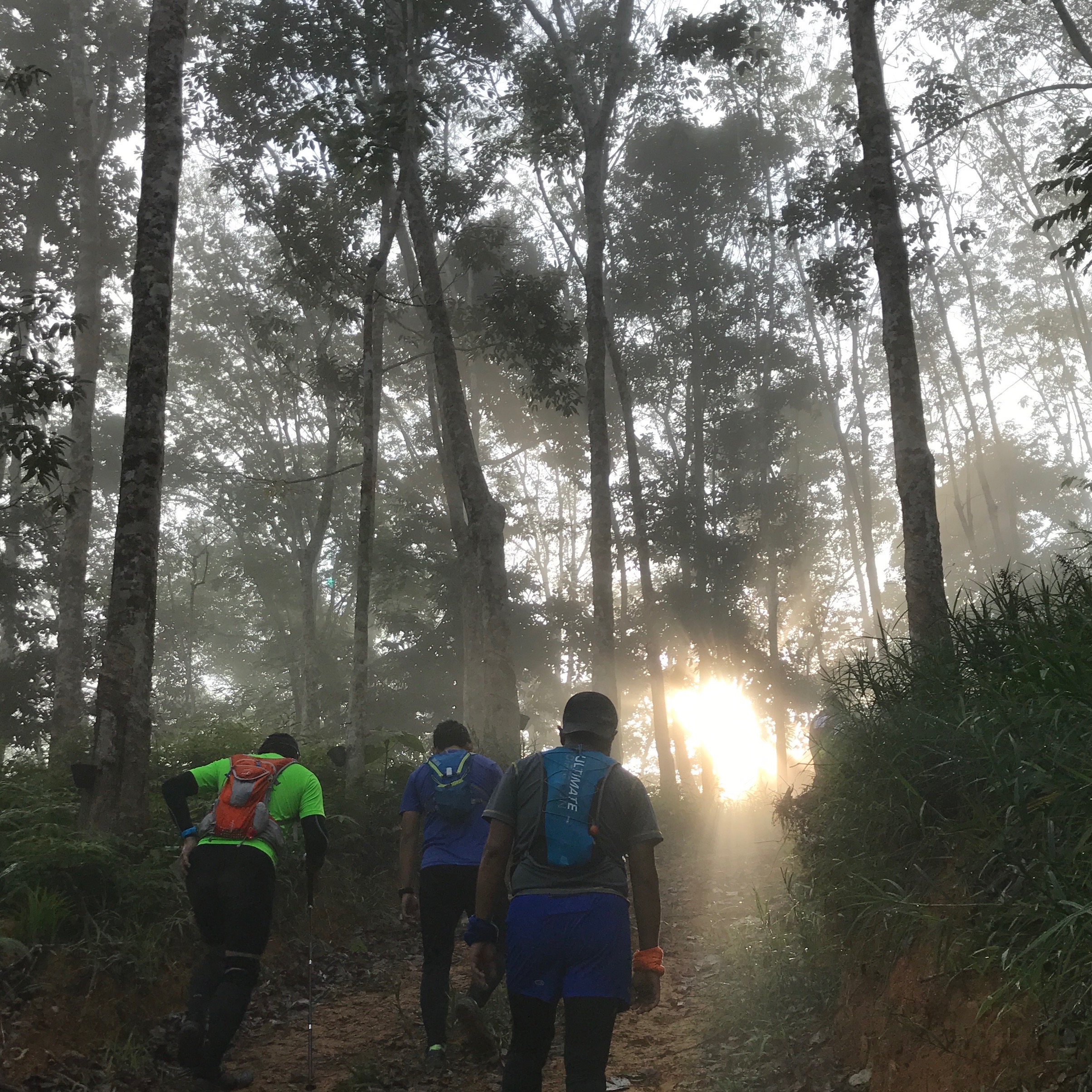- The Race Kit collection
Like most trail runs that are situated outside KL/Klang Valley, race kit collection venues are usually held at small towns that has a big hall facility. For the remote village of Merapoh, I guess the biggest hall that they have was located at a school SMK Merapoh. Besides as a race kit collection venue, the hall and school is also a venue for:
- a race expo, selling mostly mandatory items but mostly energy bar/gel/drinks for tomorrow’s event
- a camp site and an accommodation site. There are no proper hotels in Merapoh village, hence they encourage participants to pitch their own tent or sleep in the school’s student dormitories. However, we stayed at another town called Gua Musang which is about 30 minutes from Merapoh. Just like Merapoh village, there are no reputable hotels in the small town of Gua Musang but we managed to secure a comfortable and clean accommodation through Airbnb called GM Villa.
Before we could collect our race kits, we had to go through the mandatory item screening to ensure that we bring all the important items just like any other long-distance or ultra trail events. After collecting our race kit, we also stayed for a while to hear the race briefing. It was not compulsory, however the race director will usually leave hints on some dangerous areas to be extra cautious, changes in cut off times, etc.
- The Race Day
Distance: 35km
Highest elevation: 271m. The hills weren’t very technical, so they are manageable.
Route profile:
The starting point was not the same as the end point. Even though the flag off time was 7am, but we had to be at the SMK Merapoh school again by 5am to secure a parking spot, walk a few hundred meters to the 100K and 70K starting line, where there was a pick up truck waiting to transport us about 6km to the starting point.
Do expect everything, even for 35km. For the shortest route available for this event, there was a little bit of every element; the jungle, the plantations, the river-crossing, small hills, and we get a taste of Merapoh’s caves too. Plus, it was raining the night before so it was foggy even after the sun was up.
My verdict:
Since I had very minimal training for this event, I found the distance daunting. If it wasn’t for the manageable hills that weren’t very technical, I would have found the race to be quite difficult.
Weather can be unpredictable. It was raining the night before so it was cool and foggy. However, it got hot really fast once the sun was up. Always make sure your hydration bottles are filled at water stations. Isotonic drinks with salt will help too. Most importantly, bring a hat if you predict that you will still be running after 11am.
The view and scene were rewarding. Besides Cameron Ultra, it was unlike any other trail runs I have been to. The 4 hour driving journey to get to run in Taman Negara Merapoh was so worth it. My favorite part of the route was definitely the caves, however here are a few highlights of my 35km journey:

More caves! But we didn’t enter this one. Limestone caves seemed to be a popular theme in this route

It’s sad to see deforestation through out this forest. But how does one choose between developing the nation and maintaining the natural ecosystem?

There were at least 3 of these signs through out the 35km route. The organizers had some sense of humor!
Conclusion: If you want to try a long-distance trail running event but not ready to take on ultra marathon distances, TMMT is the one that you should enter.













